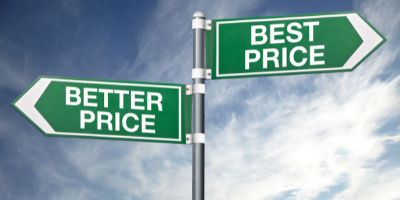
01 Aug 8 Strategies To Price Your Products
The two biggest factors influencing your business’s gross profitability (or loss!) are the number of sales generated and the price of the products sold.
Pricing is all about generating, maintaining and growing margins within your business. When you establish a suitable pricing strategy, it fits with your customers’ needs as well as ensuring the sustainability of your business. This is info you need to know.
Cost Plus Pricing Strategy
With this strategy, you apply a fixed percentage to the cost of the product. It’s a great place to start because it’s quick to implement, and it suits small retail businesses. Cost plus pricing also forces you to look at markup and break-even pricing so that you set a suitable margin for each of your products, which ultimately affects the viability of your overall business.
Competition Based Pricing
This strategy is based on observing your competitors and pricing your products cheaper than theirs. Unfortunately, this can be a slippery slope as you can easily end up in a damaging ‘price war’, which ultimately weakens your business. This strategy is usually reserved for certain product channels where similar products can be found in different shops.
Anchor Pricing
This strategy creates value in the eyes of customers as they see the original price displayed against the current price. ie: WAS $29.99 NOW $19.99! When you set a discount, you set the anchor value first and then demonstrate how you have discounted the price from the anchor value. This strategy can be quite compelling for customers due to the perceived value they are receiving.
Premium Pricing
This strategy is all about value or perceived value. It usually applies to luxury products and the pricing is set high as part of the branding strategy. It’s about being out and proud about being the most expensive in the market or offering a premium product over and above your entry level products or offering limited products which induces scarcity. It ties into your customer’s need for status, or them seeking the highest level of product quality or service.
Price Skimming
This strategy relies on setting a higher price initially and then, over time, bringing the price down. This strategy is useful for tech/software type products where new versions and products become obsolete, hence a price decrease. Price skimming is also a great pricing strategy when products are seasonal.
Loss Leader Pricing
This strategy focuses on selling products at a loss, to entice customers to continue shopping and buy products with bigger margins. The bigger margin products help offset the cost of selling products at cost or at a loss.
Dynamic Pricing
This strategy is all about flexibility. Prices are not fixed and can be changed at any time depending upon the surrounding circumstances and the demand. This strategy might be used for important dates, anniversaries, and events as well as seasonal and competitive reasons.
Value Based Pricing
This strategy is all about determining what a customer values a product or service at, and how much they are willing to pay for it. These customers focus on fairness and quality of the products for sale. Also, this strategy relies on feedback from customers and potential customers but takes time to get right. It also allows you to get close to and build trust with your customers.
Good luck and if you have any questions, feel free to contact me at:
Andrew Campbell
Specialist Business Advisor
0409 610 637
